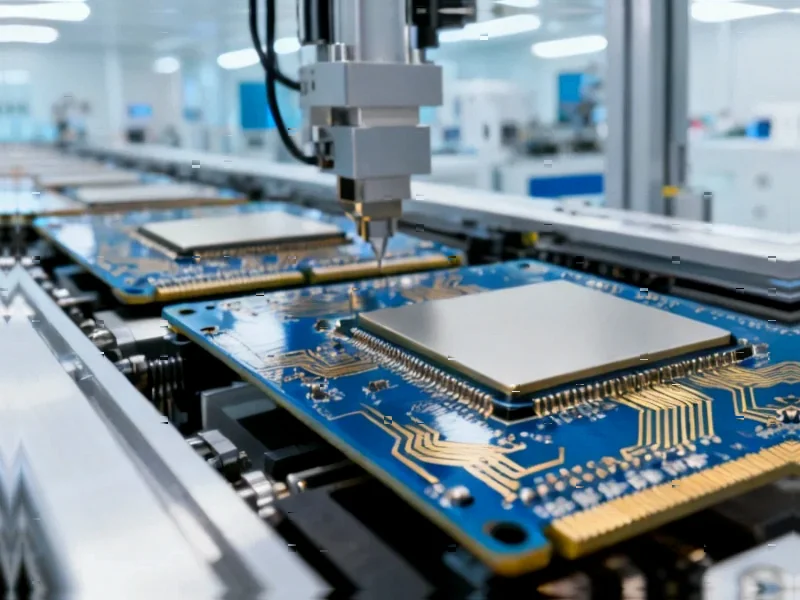According to CRN, AMD just reported record third-quarter revenue of $9.2 billion, representing a massive 36% year-over-year increase and 20% sequential growth. CEO Lisa Su highlighted “sharp” sales jumps across Instinct data center GPUs, EPYC server processors, and Ryzen PC CPUs, with data center business hitting $4.3 billion. The company beat Wall Street expectations by $500 million on revenue and guided for roughly $9.6 billion in Q4. Most significantly, AMD revealed deeper ties with OpenAI through a multi-year agreement to deploy six gigawatts of Instinct GPUs starting second half of 2025, which Su said could generate “over $100 billion in revenue over the next few years.” Despite the strong results, AMD’s stock dropped more than 3.5% in after-hours trading.
The AI Gold Rush Is Real
Here’s the thing: AMD is finally getting its AI moment. For years, everyone wondered if they could actually compete with Nvidia in the data center GPU space. Now we’re seeing the answer – and it’s a resounding yes. The Instinct MI350 series is gaining real traction with Oracle, IBM, Cohere, and multiple AI startups. But the OpenAI deal is the game-changer. Six gigawatts of GPU deployment? That’s enormous scale. Basically, AMD is becoming the credible alternative to Nvidia that the market desperately needs.
And the timing couldn’t be better. With AI workloads exploding, cloud providers are scrambling for any available compute. AMD’s positioning as the #2 player suddenly looks incredibly valuable when #1 can’t meet demand alone. The fact that they’re already talking about MI400 development and the Helios rack-scale platform shows they’re thinking big – like, tens of billions in annual revenue by 2027 big.
Server CPUs Are Crushing It Too
While everyone’s focused on GPUs, AMD’s server CPU business is quietly hitting all-time highs. Fifth-gen EPYC processors made up nearly half of their server revenue last quarter. That’s insane growth. More than 160 new cloud instances launched in just three months, bringing the total to over 1,350. Enterprise adoption tripled year-over-year. So what’s driving this? AI, ironically enough.
Here’s the dirty secret of the AI boom: all those GPUs need CPUs to manage them. Hyperscalers are building out massive general-purpose compute capacity to support their AI workloads, and AMD is cleaning up. Their 2nm “Venice” processors coming next year already have cloud partners testing platforms. If the customer engagement is really “the strongest we’ve seen” as Su claims, Intel should be very worried.
PC Business Is On Fire
Don’t sleep on AMD’s client business either. Record Ryzen processor sales drove client revenue to $2.8 billion, up 46% year-over-year. Desktop CPU sales hit all-time highs, and Ryzen laptop sell-through is surging. But the real story might be in commercial adoption – enterprise Ryzen PC sales grew over 30%, with big wins across Fortune 500 companies in healthcare, finance, and manufacturing.
Why does this matter? Because it shows AMD isn’t just a gaming brand anymore. They’re making serious inroads into the corporate world where the real money is. When pharmaceutical companies and financial institutions are standardizing on Ryzen, you know the perception has shifted permanently.
What This Means For The Chip Wars
So where does this leave us? AMD is executing on all cylinders while Intel continues to struggle. The $9.2 billion quarter puts them in rarefied air, and the $9.6 billion Q4 guidance suggests the momentum is sustainable. But the stock dropped anyway? Welcome to Wall Street, where great isn’t good enough when expectations are sky-high.
The embedded segment was the only weak spot, down 8% to $857 million, but even there Su says design wins are strong. Basically, AMD has transformed from a plucky underdog to a legitimate AI and data center powerhouse. With the OpenAI partnership and their expanding cloud footprint, they’re positioned to capture a huge chunk of the AI infrastructure market. The chip wars just got a lot more interesting.




